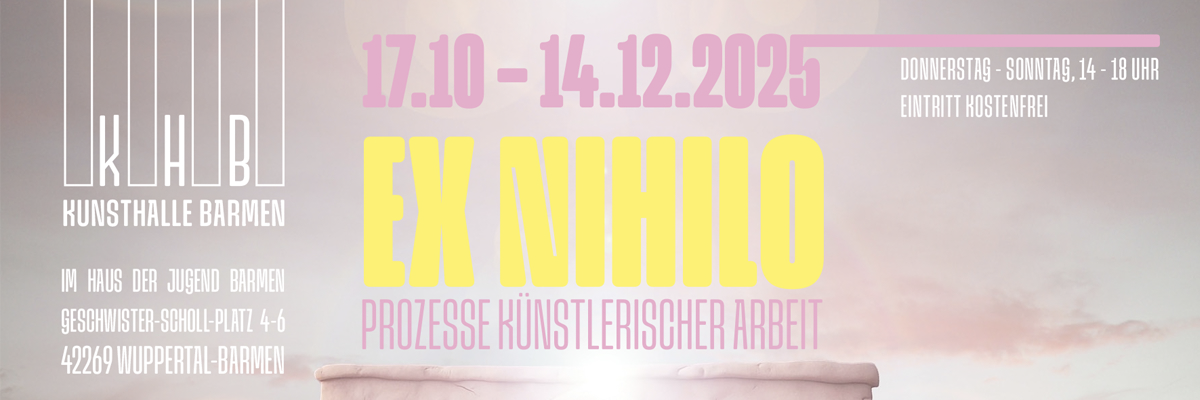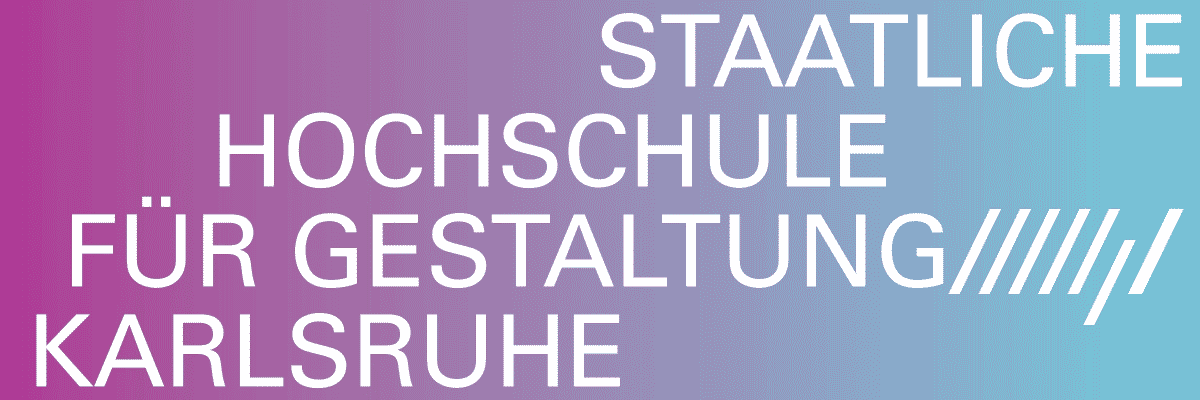
Julie De Kezel
Vielen Dank für die Blumen
Project Info
- 💙 Karl & Faber
- 💚 Karl & Faber + Akademieverein Munich award
- 🖤 Julie De Kezel
- 💜 -
- 💛 Milena Wojhan
Share on

Vielen Dank für die Blumen, Labor, 2023, installation view
Advertisement
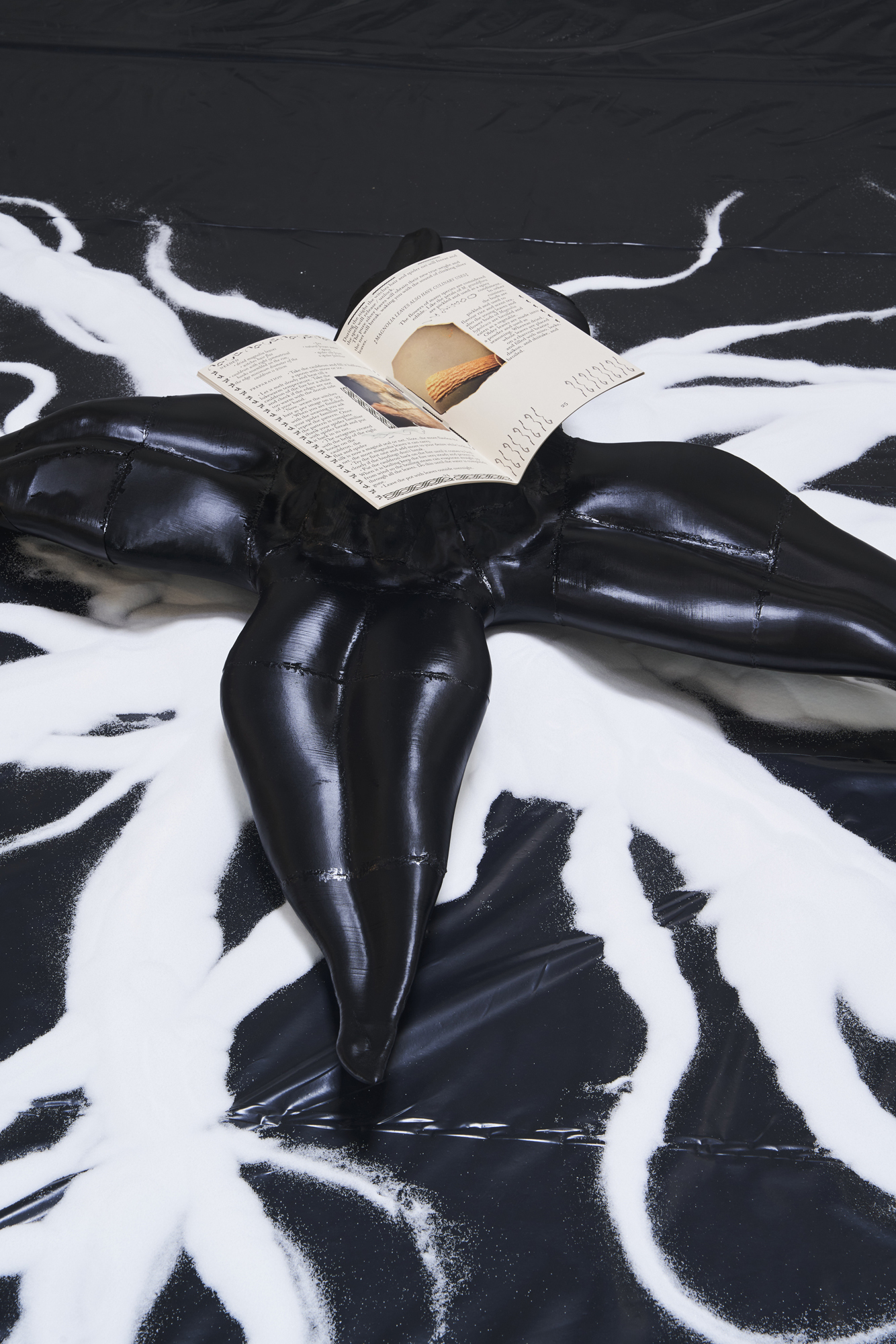
Growing grimoire, 2023, Alpen salt, 3D-print, artists book
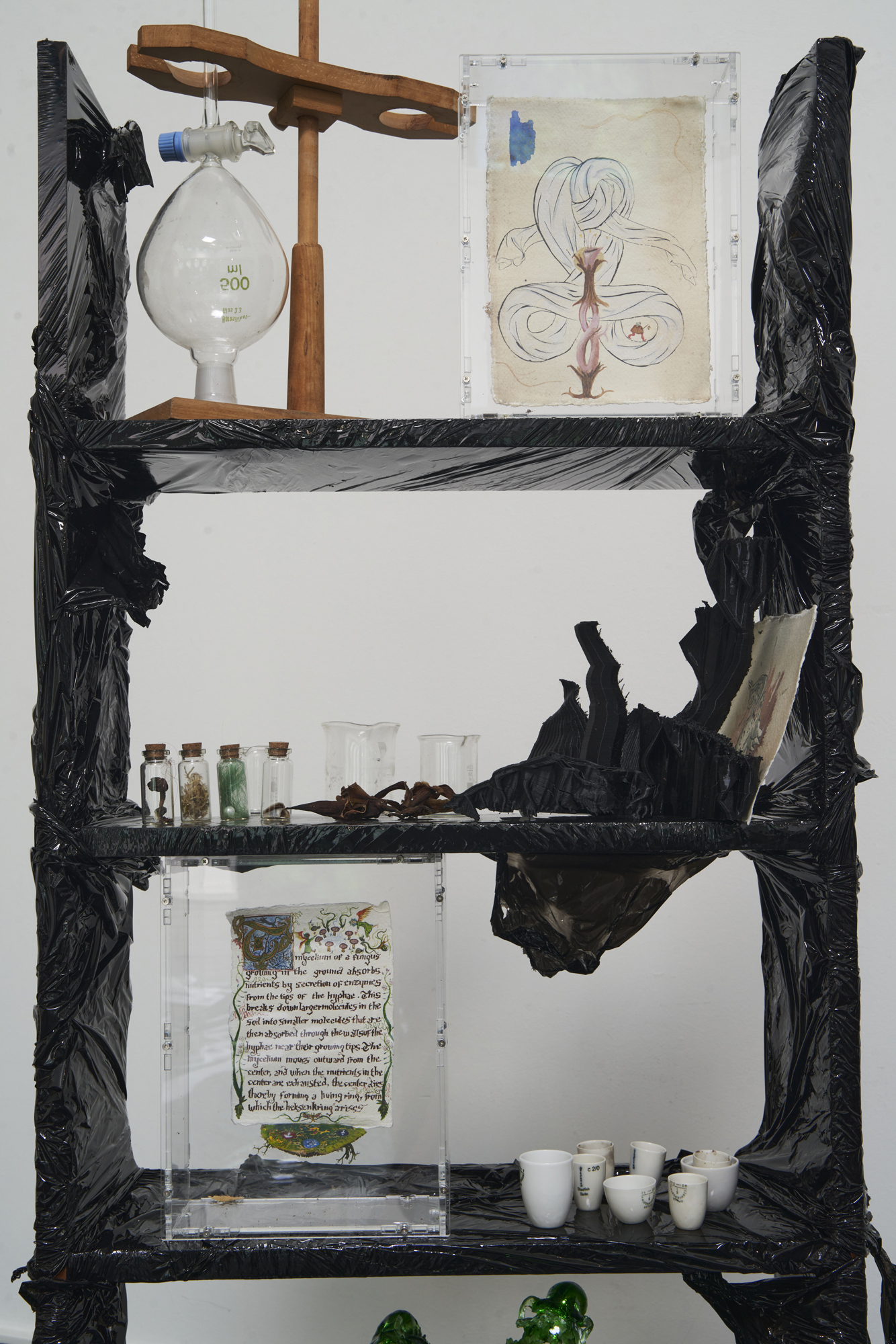
Vielen Dank für die Blumen, Labor, 2023, installation view
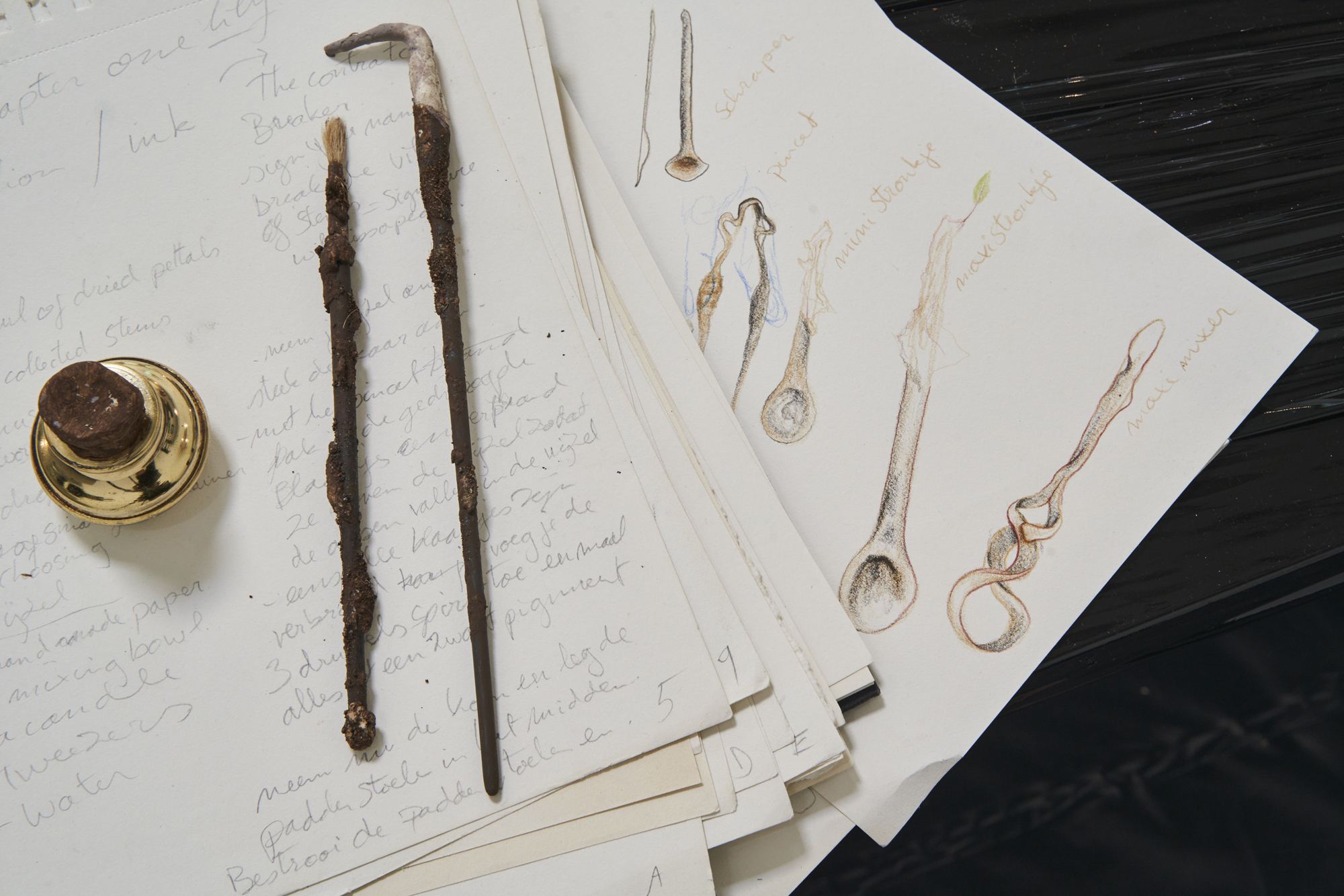
Apparatus, 2023, mixed media
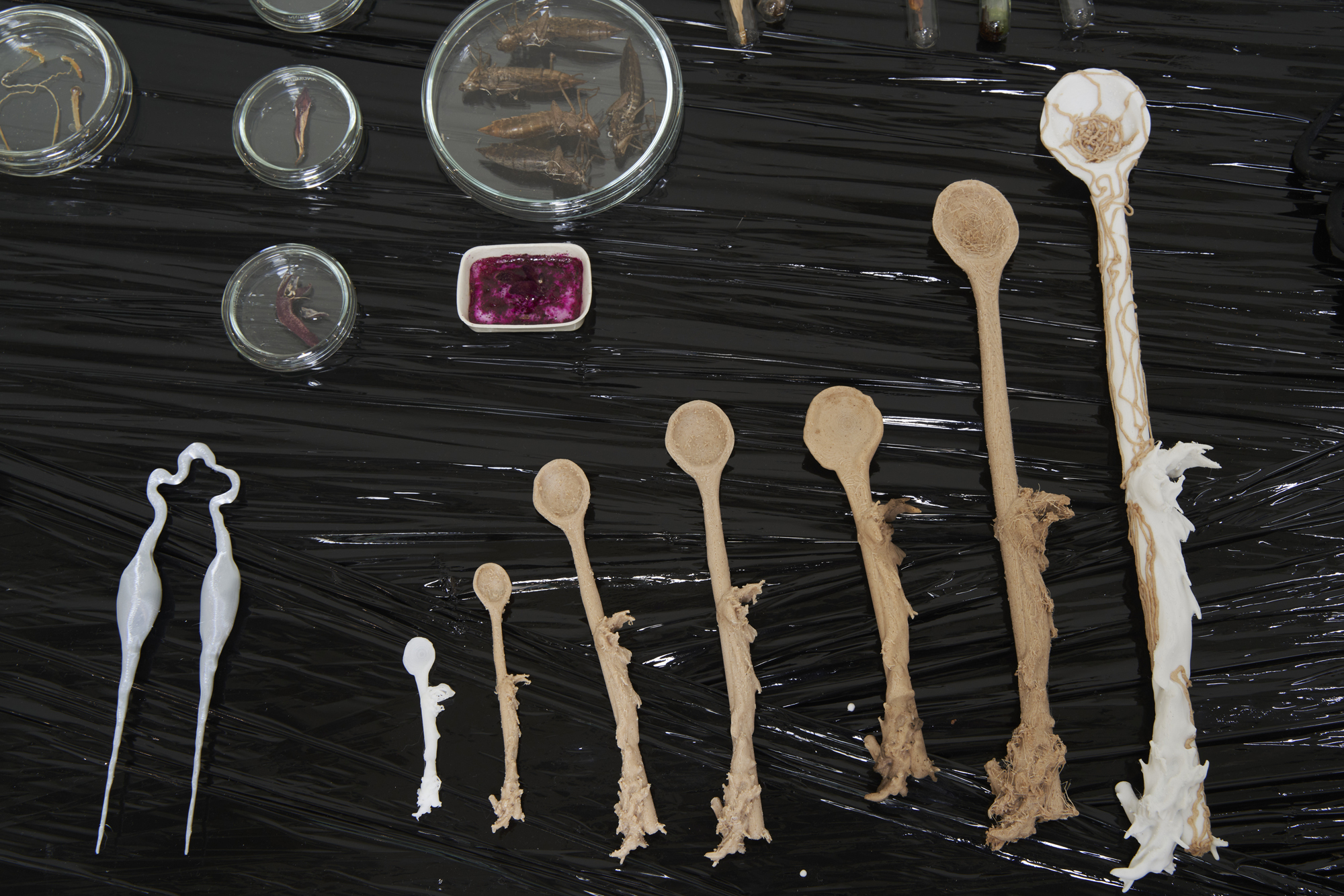
Apparatus, 2023, mixed media
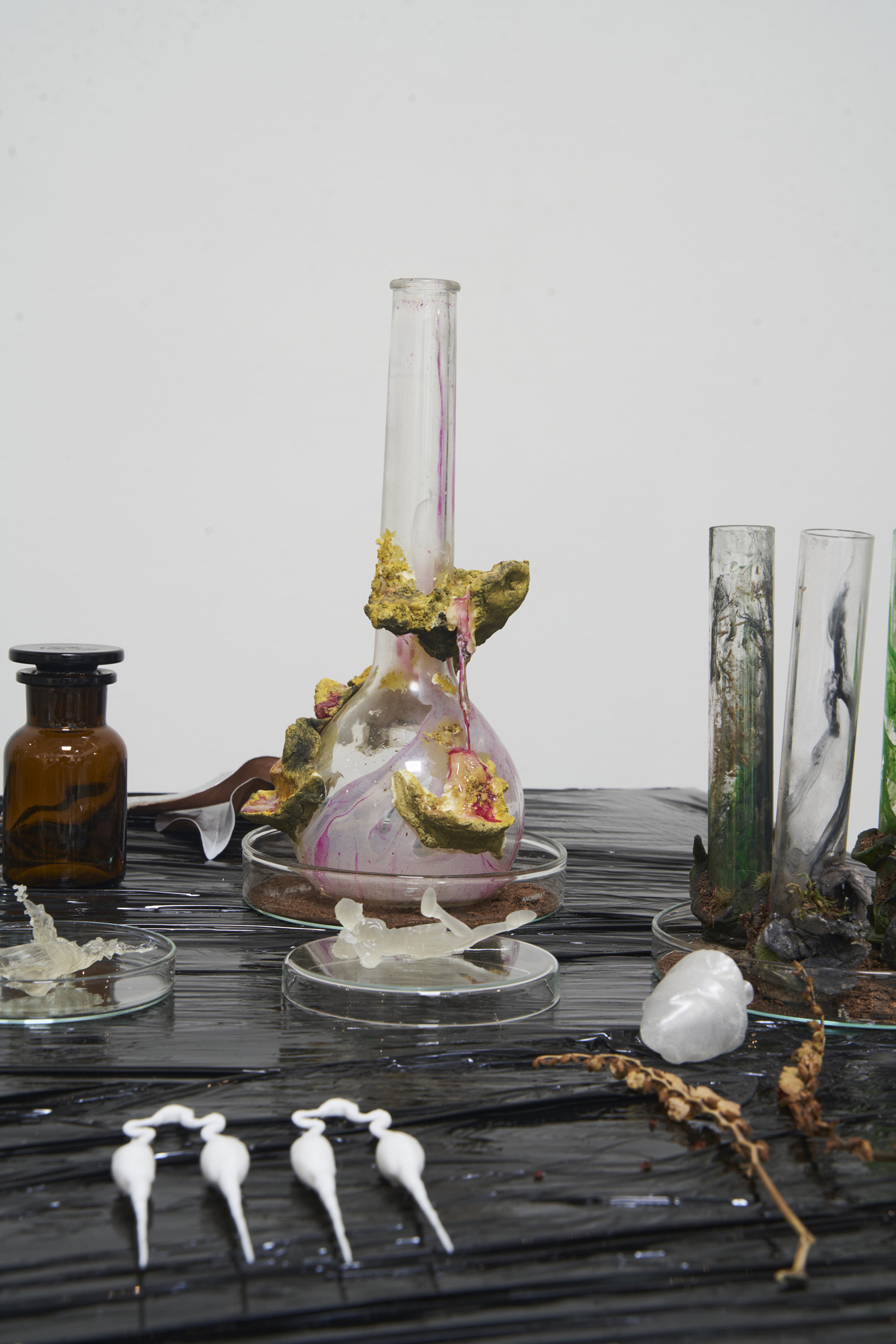
Apparatus, 2023, mixed media
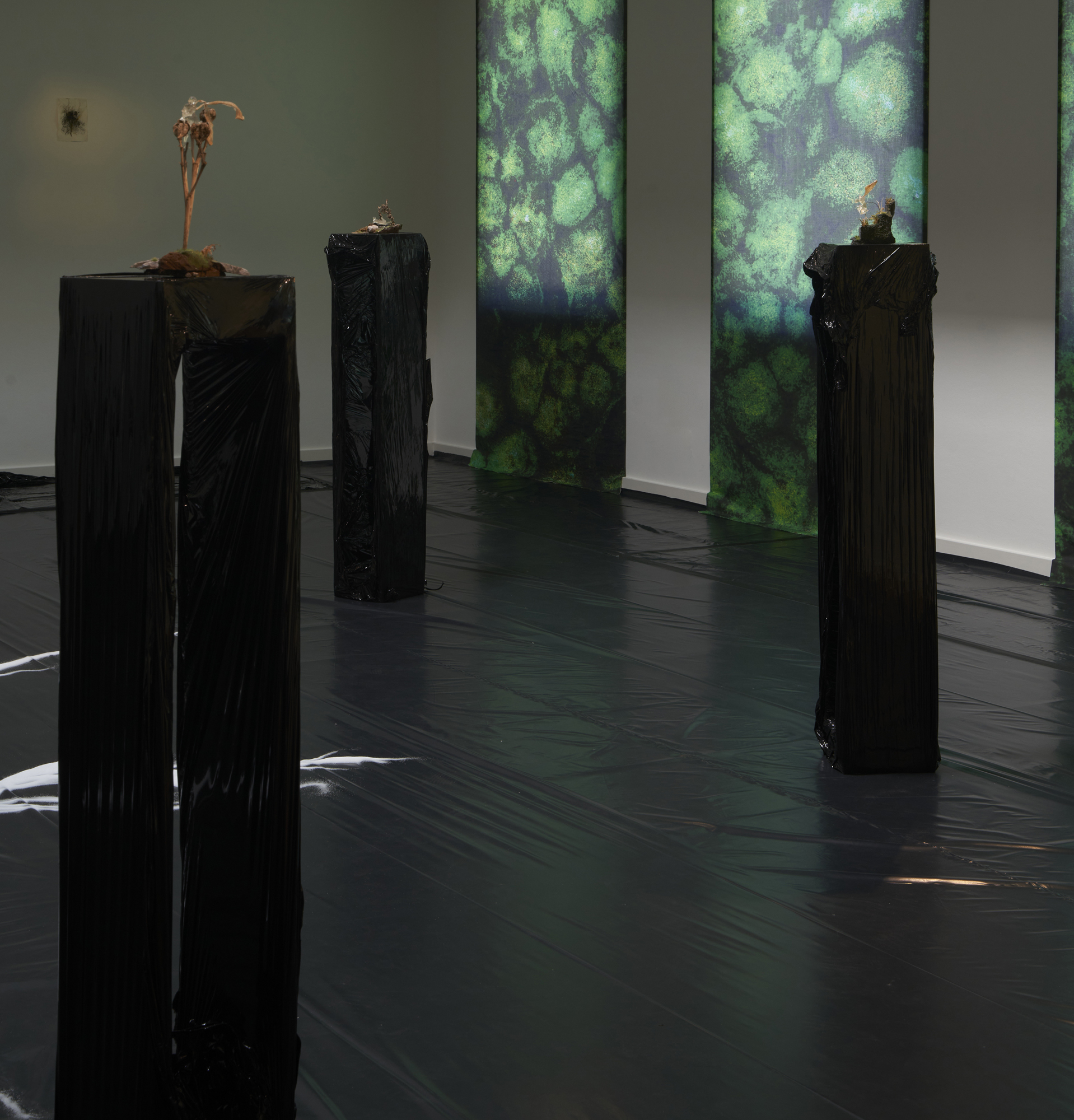
Vielen Dank für die Blumen, Labor, 2023, installation view
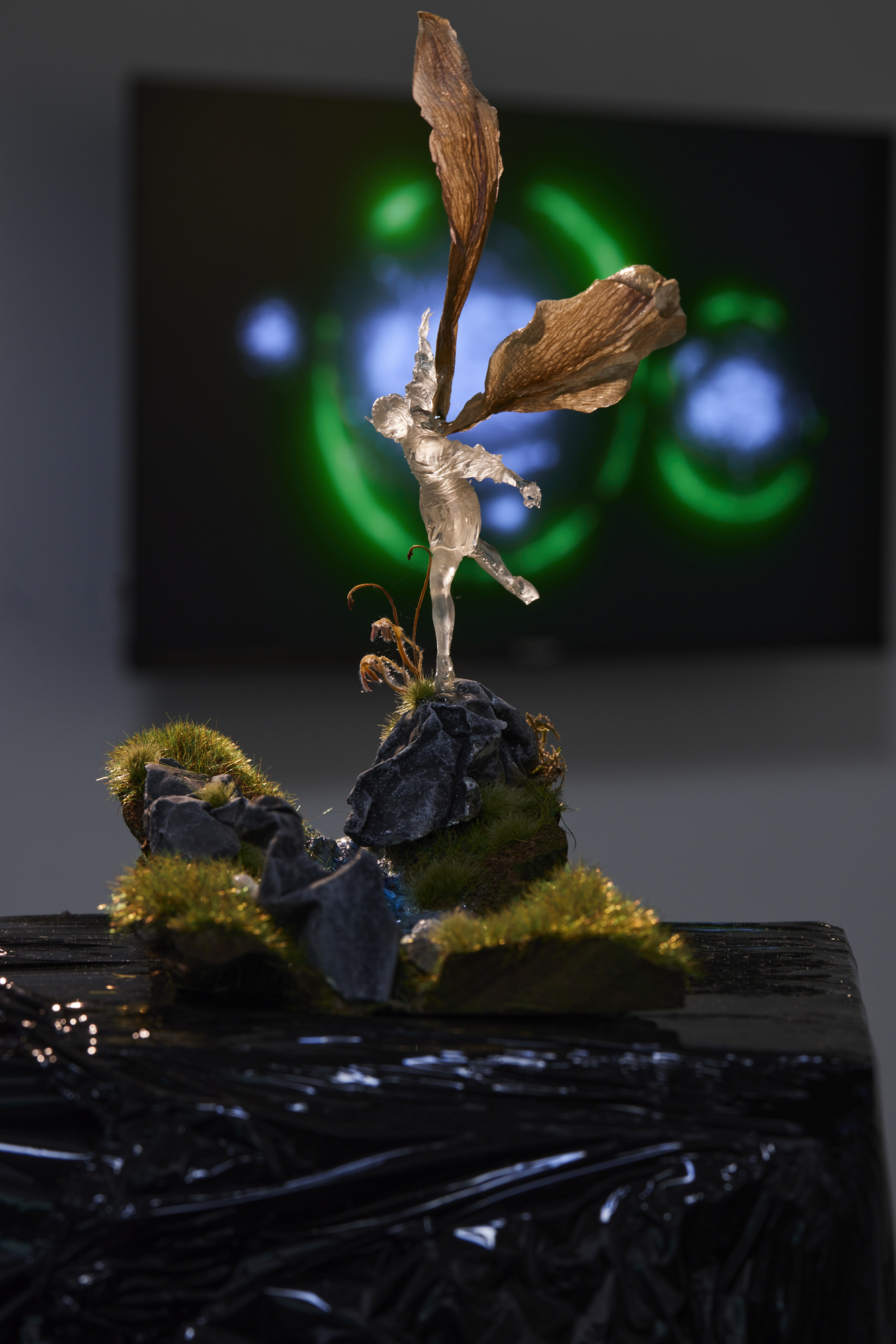
Creeping Creek, 2023, mixed media

Rocky dive, 2023, mixed media

Mushroom meltdown, 2023, mixed media
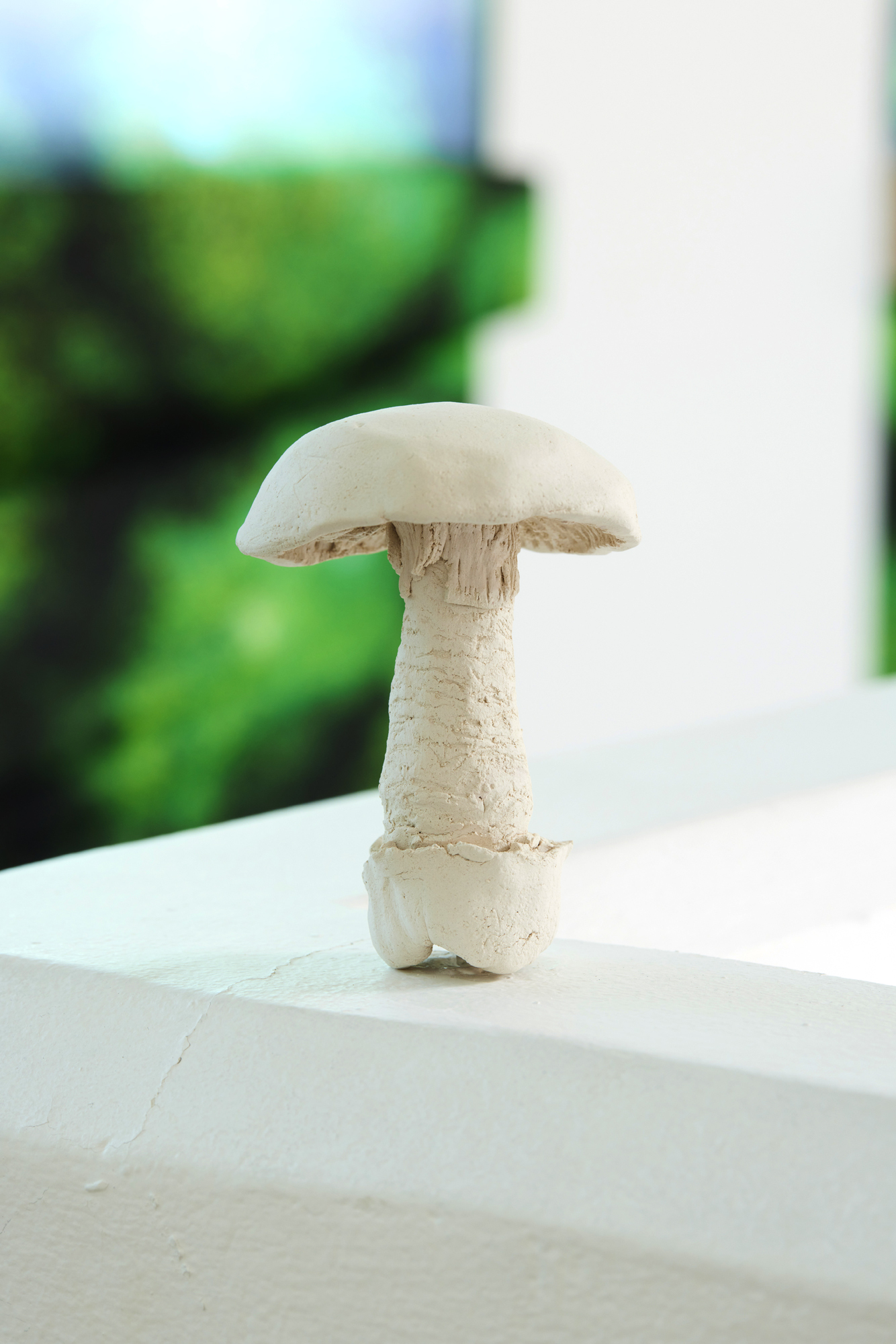
Heksenkreis, 2023, Installation 16 Ceramic mushrooms

Bryophyta, 2021, moss, video: 4'45'', colour , no sound vfx: Glenn De Cock

Blue jelly moss, 2023, mixed media

detail, Blue jelly moss, 2023, mixed media

Dewy dance, 2023, mixed media

Tip toe, 2023, mixed media
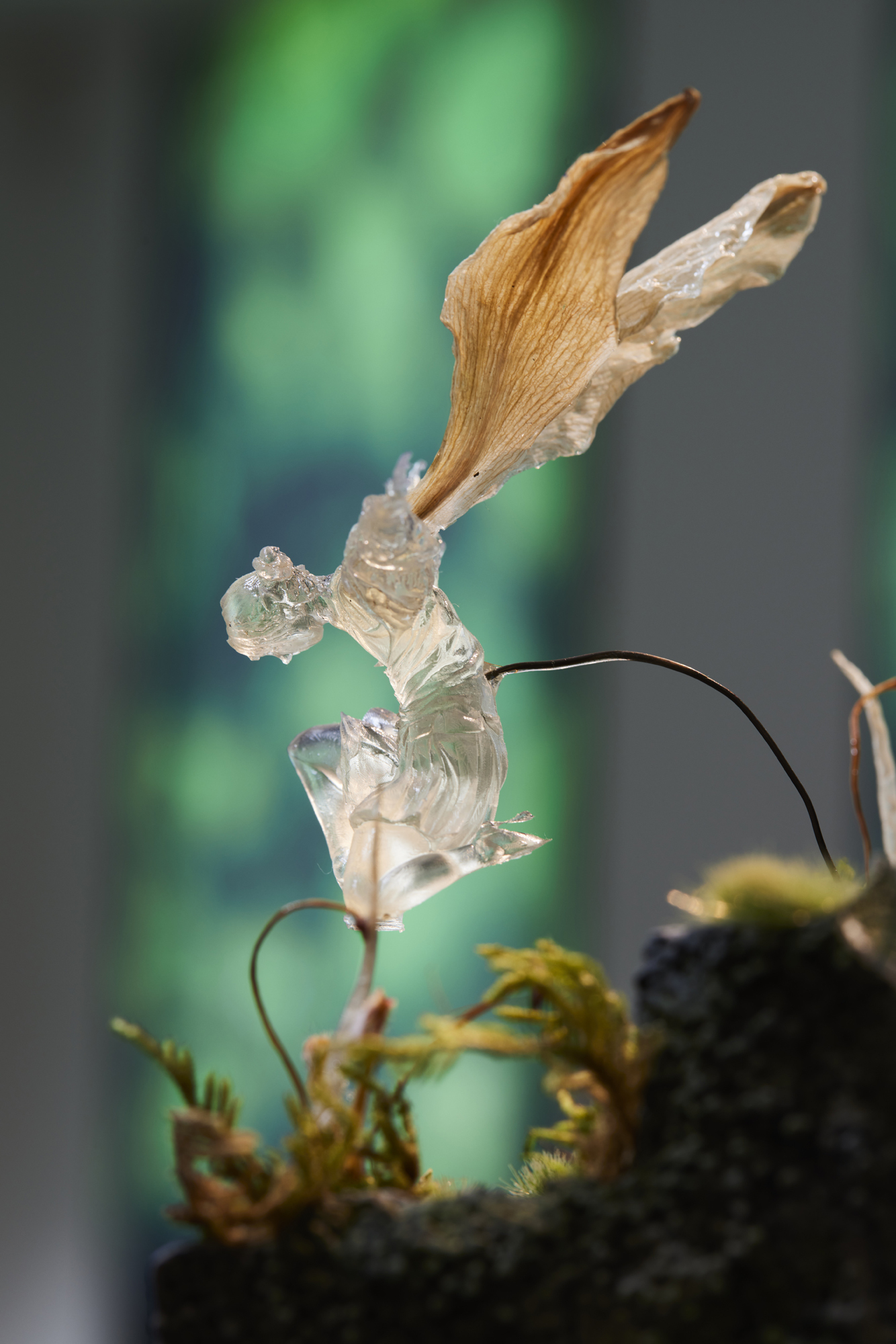
Detail, Rocky dive, 2023, mixed media
As an ode to the given flowers from the KARL & FABER Preis der Stiftung Kunstakademie München Julie De Kezel brings forth an exploration on the bare bones, which the bouquet consists of. The dissected bouquet unravels into six plant species that are brought to light in an alchemy-phantasm lab, welcoming the visitor in the body of a flower.
The show is a culmination of the research the artist has realised on the pieces and varieties of structures inside the bouquet. Corresponding modern tools were used by the artist to observe even the tinniest details of the marvellous herbal formations hidden from the human eye. The interpretation of this observation, was concretised by Julie de Kezel into a series of sculptures, drawings, and site-specific research.
With microscopic structures and grand installations, Julie de Kezel approaches the audience in this solo show with a spatial installation and a play on the perceived structure of the flowers. The large windows, which overlook the audience in the same manner as microscopic research, are covered with a patterned cloth resembling conical cells—a microscopic floral surface that serves as the ultimate petal surface enhancer in many ways, making it pollinators such as bees their favourite tactile surface.
The structure of the show gives the viewer the notion of entering the ovary of a flower, where the workplace of a magical being takes place.
As you walk up to the center of this ovary, what you face is a Grimoire containing six chapters, each time starting with one of the plants found in the bouquet.
The chapters are recipes, which embody a compilation of discovered medieval scripts, scientific texts, and personal writings by the artist herself. Resulting in spells and potions, aiding those who can use a boost within oppressive situations. In between the six main chapters, the artist shows a collection of her works connected to the world of plants.
-
